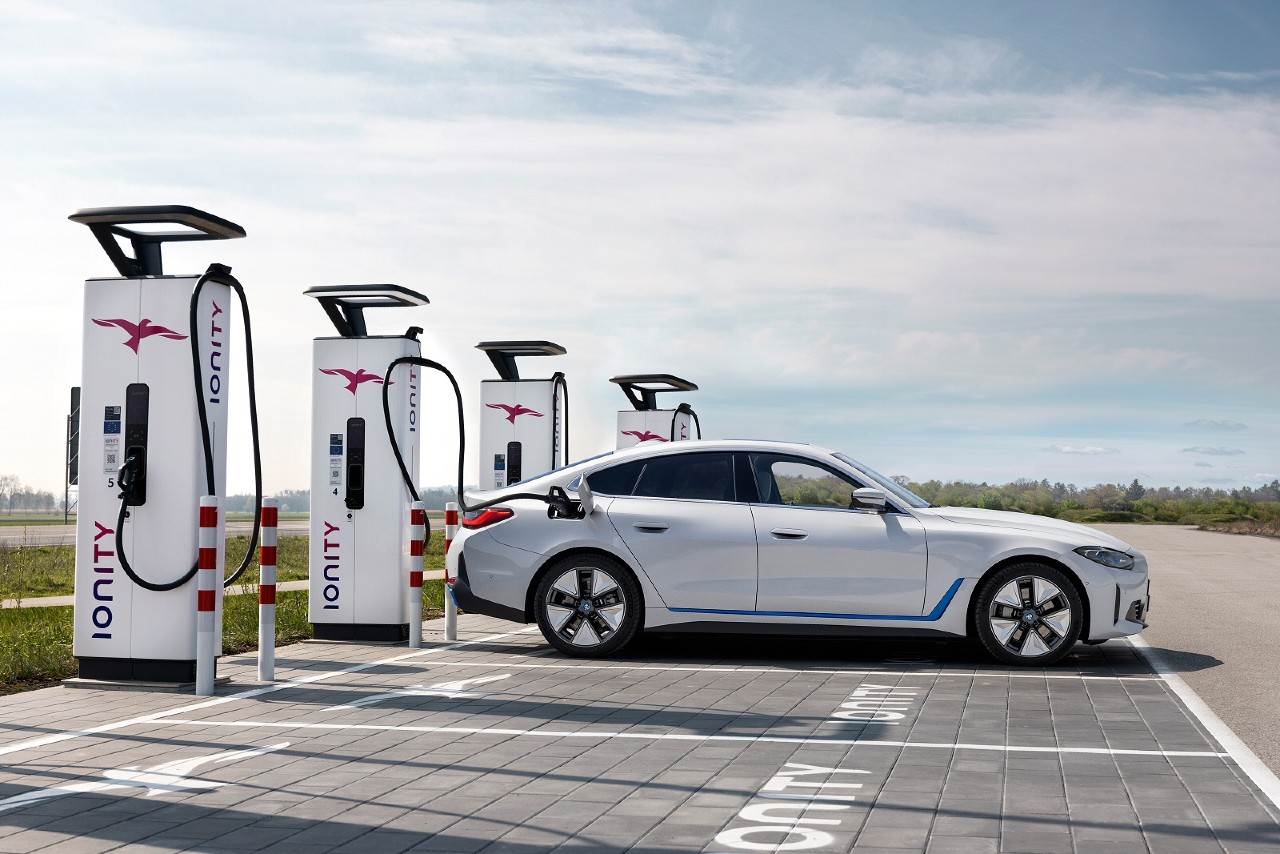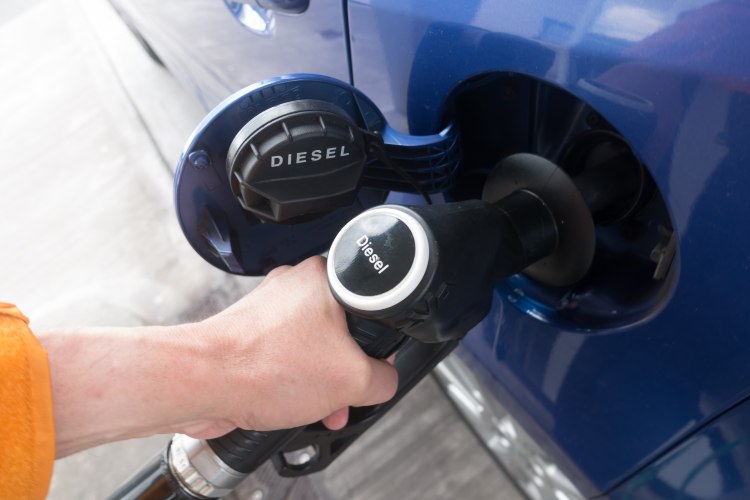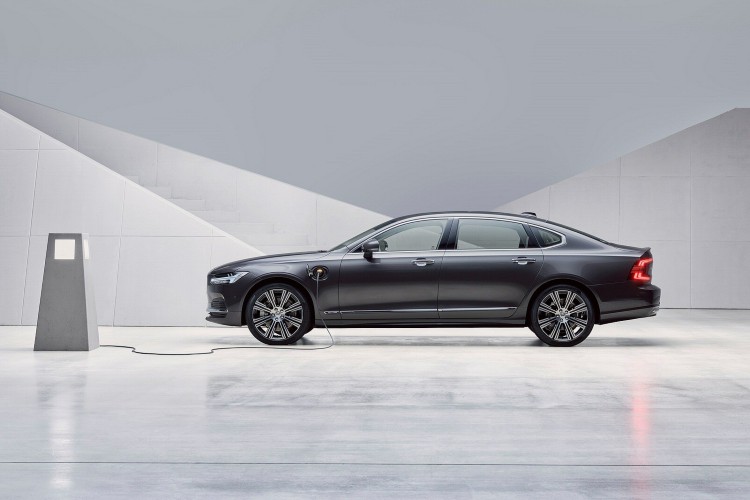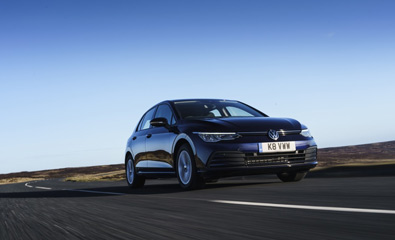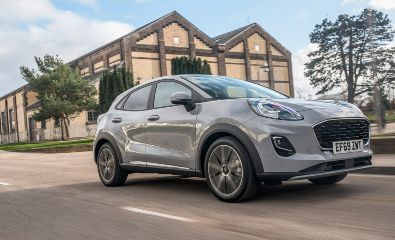Not too long ago, it was pretty simple figuring out what sort of engine was the one for you. You wanted power, you picked the biggest, most powerful petrol engine you could afford. You wanted efficiency, you chose a diesel.
It’s not quite that simple anymore. It never actually was, but lately, it does seem a lot more complicated. Petrol engines are getting smaller and more efficient; diesel is taking a bit of a battering in terms of consumer confidence; there are loads of types of hybrid, and everyone including the Government seems to want you to run an electric car.
If the above paragraph chimes with you, you’re in the right place. We’re going to explain all the different engine options so that you can make the right decision for your needs. The good thing about all this choice is that there’ll definitely be at least one that fits you perfectly. Probably more. They might not be the things you think, either.
To start, we’ll explain the basics of the main types of engine, their characteristics, strengths and weaknesses, then we’ll guide you through the questions you’ll need to ask yourself to make the right choice. So, let’s go...
Basic Types Of Engine
Petrol Engines
Petrol is making a comeback. Well, it never went away really, but as a fuel it’s fluctuated in popularity and has had a few reinventions through the years. Most recently, petrol has become a fuel very well suited to small cars because of the strides manufacturers have made in turbocharging.
You might still think of turbocharging as a high-performance thing, but these days it’s more often employed as a way of forcing a small engine to perform better while using less fuel. Some examples are Ford’s EcoBoost engines, Volkswagen Group’s TSI engines and Nissan’s DIG-T engines.
How Do Petrol Engines Work?
Petrol engines work using a process called spark ignition, which means that a small spark (from a spark plug) ignites a mixture of fuel and air in the cylinders, creating an explosion that forces the piston downwards, which turns the crankshaft, ultimately powering the wheels. A turbo forces more air into the cylinders, increasing the strength of the explosion without necessarily using any more fuel.
Traditionally it’s been a relatively easy and cheap way to increase power, but it wasn’t always great for refinement. You might have heard of ‘turbo lag’, which is the sort of ‘rubber-band’ effect in cars with big turbos where a huge swell of power happens when a turbo kicks in, but which comes seemingly long after the driver has pressed the accelerator.
However, over the last decade or so, manufacturers have learned to make small-capacity turbo engines with excellent refinement and responsiveness – capacity being a measure of the volume of the cylinders, hence engine size being measured in litres. And so, where a generation ago you could be sure that a 1.0-litre petrol engine would struggle to pull off Elton John’s hairpiece, and make a lot of noise while doing so, today there’s a 1.0-litre Ford Puma with 155hp. That’s more than a Mk4 VW Golf GTI had.
Diesel Engines
How Do Diesel Engines Work?
Diesel uses compression combustion, which means that instead of having spark plugs igniting the fuel, the air-fuel mix is compressed inside the cylinder until it gets hot enough to go bang. That partly explains why diesels are generally noisier than petrol engines. Diesels are almost always turbocharged too, which is one reason why diesels generally have more torque than petrol engines – torque being the force that gives a car its sense of ‘pulling power’. In fact, contrary to common misconception, torque is a more important measure of how quick a car feels when pulling away and when the engine is running at low revs than horsepower.
For various reasons that we’ll skip past here, because we’d like to keep your attention, diesel is a more efficient fuel than petrol. For many years, drivers were willing to accept diesel’s noise and refinement shortcomings, and the fact it’s a little more expensive at the pumps, and the cars themselves having higher list prices than petrol equivalents, generally, because the mpg gains were so impressive.
Broadly speaking, you could expect to gain 10-20mpg with a diesel car compared to the same one fitted with a similarly performing petrol engine. Their tank ranges were much bigger too, which is a genuine factor for drivers doing high annual mileages. Incidentally, this is a big reason why luxury-car buyers often choose diesel cars, to avoid the fuel station.
But although diesel is still generally the more efficient choice in pure mpg terms, and will always outperform a petrol-powered equivalent in pure mpg and torque terms, petrol is closing the gap in both cases today, for the reasons outlined earlier.
Mild Hybrid Engines (MHEV)
Mild-hybrid technology is the latest trend in car power because it’s a relatively easy way to either reduce fuel consumption or improve performance, usually both, and usually only very slightly. A mild-hybrid vehicle is basically one that’s powered conventionally at the wheels – by a petrol or a diesel engine, that is – but with some electrical assistance.
How Do MHEVs Work?
Mild hybrids tend to work by bumping up the size and power of the starter motor and linking it to a larger battery than the normal one ordinarily used to feed the car’s electronics. This set-up is then linked to the engine and to a brake energy recapture system, which is a thing that captures heat from the brakes that would normally be lost and stores it as battery energy. This arrangement doesn’t change the driving experience at all, aside from allowing the car’s engine to switch off more often and for longer – for example, when the car is coasting on the motorway, or when it’s coming to a stop. The little bit of additional power can also reduce the work that an engine is doing under acceleration, which also reduces fuel use.
Although mild-hybrid tech does have tangible benefits, usually making an engine a couple of miles per gallon more efficient, some manufacturers are arguably taking advantage of the favourable connotations of the word ‘hybrid’, which most people associate with significant fuel gains, by badging their mild hybrids without including the ‘mild’ bit. A Ford Puma EcoBoost Hybrid is a mild hybrid, for instance. We probably shouldn’t pick on Ford really – other manufacturers do it – but it’s an example.
Hybrid Engines (HEV)
Toyota Prius. We knew what you were thinking, see. That’s because the Prius, as the first mass-market hybrid petrol-electric vehicle back in 1997, has become synonymous with the technology. There are of course loads of them now, although of late the trend has moved more towards plug-in hybrid cars for reasons that will become clear in the next section.
How Do Hybrid Engines Work?
A hybrid car is one that combines a conventional internal combustion engine (ICE) and a battery-powered electric motor, both of which can turn the wheels either alone or in tandem. As per a mild hybrid, the idea is to improve efficiency by taking load away from the fossil-fuel-powered bits. Hybrids are sometimes now referred to as ‘self-charging hybrids’ to distinguish them from plug-in hybrids, although this is confusing because it invokes an image of self-perpetuating charge, which isn’t the case. ‘Self-charging’ hybrids take their charge from the petrol motor or from brake energy recapture alone; you can’t plug them in to replenish the battery, would be the more succinct statement here.
How Are Hybrids More Efficient?
How are they more efficient, then, if they too are taking charge from fossil fuels? Especially when, as you may have already realised, the additional motor and battery makes them heavier? Well, firstly the set-up means that brake energy usually lost as heat can ultimately be used to power the wheels, but also the electric motor means that a smaller petrol or diesel engine (usually the former) can be used, with the electric motor having a huge impact in lowering the work that the engine has to do, and therefore, the amount of fuel it has to use.
Electric motors are inherently more energy-efficient than combustion engines, converting up to 95% of the energy they draw into actual power at the wheels (because of fewer moving parts, among other reasons), as opposed to roughly 20-30% with a petrol or diesel engine. Electric motors are also more efficient at moving a car at low speeds and pulling the car away from standstill, and they can also assist in boosting performance, meaning a smaller combustion engine can be used while still feeling quite powerful. It’s about balance, in other words, about making every litre of fuel go further by incorporating an energy source that’s fundamentally more efficient.
Most hybrids can manage a mile or 2 using only the battery, but usually only at town speeds.
Plug-In Hybrid Engines (PHEV)
As the name tells you, a PHEV is a hybrid that can be plugged in, which means that the battery can draw power from a source other than the engine. Plug-in hybrids have a bigger battery for this reason, and as a result have a far greater electric-only range than a standard hybrid, usually somewhere between 20 and 40 miles. Most PHEVs use petrol power but very occasionally they’ll be diesel.
How Do Plug-In Hybrid Engines Work?
In principle a PHEV works the same way as a standard hybrid, though, with the battery either assisting the petrol engine or working on its own to power the car. Because PHEVs have bigger batteries and more powerful electric motors than a HEV, their electric-only driving modes usually have the ability to get the car to motorway speed without tapping into the fuel tank.
They often have sophisticated driving modes too, which allow you to choose how the car manages the relationship between the electric motor and the petrol engine. For example, a ‘sport’ mode or similar will keep the engine and the motor working together for maximum performance, while an ‘eco’ mode will look to use electric power as much as possible. Some even have ‘preserve’ type modes that will save battery charge so that you can drive the car in electric-only mode later on in your journey – when you reach a city centre, for example.
Plug-ins are often seen as a bridge between an ICE and a full electric car, offering the best of both worlds: some electric-only driving but without the range anxiety of a battery-only vehicle. To an extent that’s true, although there are some significant drawbacks to PHEVs that you have to think about.
What About Those PHEV MPG And Co2 Figures?
You’ll probably have noticed that PHEVs boast staggering official mpg and CO2 figures, almost always in the hundreds in the case of the former; the Mercedes-Benz CLA250e, for instance, has a 282.5mpg fuel economy rating and 23g/km CO2. Unbelievable, eh? Well… yes. There’s no way you’ll get anywhere close to the official average figure of a plug-in hybrid, but they always perform really well in the laboratory-based WLTP fuel efficiency test, yielding some absurd results. However, this also means that they’re extremely tax-efficient – because VED and company-car tax (BIK) are set using CO2 emissions (directly linked to fuel economy), so if you’re a company-car driver they’re often a no-brainer.
Thinking about leasing a company car? Take a look at our pick of cars with the best BIK benefits.
In reality, though, the real-world efficiency you’ll get from a PHEV varies hugely depending on the way you use it. If you have a short daily commute and can keep the battery charged up, you might find you’ll rarely have to tap into your fuel reserves. Mega. However, those doing longer journeys often find that PHEVs offer quite poor fuel economy, because with a flat battery they basically become very heavy conventional cars. This is why, more than any other type of car, it’s important that you think carefully about how you’ll use your car before choosing a PHEV.
Electric Engines (EV)
We’re into the future now. With the Government legislating that all sales of new petrol and diesel cars will be stopped by 2035, and every manufacturer pouring billions into the development of electric vehicle tech, it seems certain that EVs are where we’re all going. This is a good thing. Electric cars are great.
As we mentioned earlier, electric motors are inherently far more efficient than internal combustion engines, using fewer moving parts and losing far less energy as heat. They also don’t need a traditional gearbox, basically because they produce all their torque instantly and consistently across a huge rev range; an internal combustion engine needs to be operated within a ‘sweet spot’, and keeping it there is the job of the gearbox, whereas an electric motor isn’t limited by such concerns. For that reason, the manufacturer selects a single gear that provides the best compromise between performance and efficiency.
That’s why electric cars have a ‘seamless’ sense of acceleration, without that rubber-band feeling of changing gears. It’s also why they feel so much more responsive than an ICE car, because they give you all their torque in an instant, rather than having to ‘spool up’ to that point, as it were. Add that to the lack of internal combustion noise and you have a driving experience that feels truly weird and wonderful, at least at first.
What About Charging?
Of course, the major drawback is the inability to quickly ‘fuel’ the thing. There’s no doubt that this is the main issue keeping people away from electric cars: ‘range anxiety’. It’s a perfectly understandable response and even though the ranges of electric cars are getting longer all the time, there are still plenty on sale with smaller ranges (considerably less than 200 miles) whose battery reserves will need to be ‘managed’ carefully. You’ll need to keep on top of charging them, in other words.
Find out more about electric car ranges in our comprehensive guide.
We don’t have the word count here to go through the ins and outs of charging, but very quickly, all electric cars can be trickle charged using a three-pin plug (assuming you have the correct cable). This could take anything up to 24 hours, though, and even longer if you pick a high-end electric with a massive battery, like a Porsche Taycan. You’re better off using a so-called ‘fast’ charger, which all electric cars have the facility to do and is generally via a wallbox installed outside your home or office. This will take something from 6 to 8 hours, again depending on the size of your vehicle’s battery.
Finally, ‘rapid’ charging is even quicker. It varies in speed from car-to-car and tends to be available on more expensive or newer models, but using rapid charging it’s often possible to get to 80% of the battery’s max capacity well within an hour. Rapid chargers tend to be installed in public car parks and service stations. They’re often free but can also incur a small fee for a one-off charge.
Everything you need to know about charging an electric car can be found here.
How To Choose An Engine Type
OK, you’ve got through all that. Well done. You hopefully already have a good idea what sort of engine will be right for you, but if not, the first thing you have to do is ask yourself ‘how am I going to use my new car?’ Sounds basic, right, but that covers stuff like:
-
How many miles you’re going to do in a day, on average.
-
Are you just travelling to work and back a few miles?
-
Will you ever have to do long journeys in your car, or do you have access to another vehicle for such trips?
For instance, you shouldn’t let the possibility of the odd trip to the south coast put you off having an electric car when you could make other arrangements. That could save you a fortune.
If you are going to be doing a lot of miles, then diesel could be your best bet for the efficiency and tank range they provide. That said, diesels don’t respond well to regular short journeys from cold starts – they need to be warmed through with longer journeys, or you can end up with engine problems.
Petrol could be better for you if you’re just driving around the doors, and a modern small-capacity turbo will give you mpg figures very close to a diesel in any event. Same goes for the size of the car. If it’s most often going to be just you, then there’s a good argument for leasing a smaller, more efficient vehicle.
We’d strongly advise you to consider an electric car, even if you assume it won’t work for you. If you really want to make sure, try keeping tabs on your mileage from day-to-day for a couple of weeks, then measure that against the battery range of an electric car you like (maybe use 75% of the manufacturer’s claimed range to give you a more realistic figure, so if the figure is 200, assume you’ll get 150 miles from it.)
And if you’re worried about the battery technology moving so fast – which it is, to be fair – the great thing about leasing is that you’re only tied to the car for the length of your lease deal, and for a great price, meaning you’re not stuck trying to sell on a vehicle with a relatively small-looking range down the line.
If it’s still too soon for electric for you, then consider a hybrid or a plug-in hybrid, which can be a great stepping stone. Plug-in hybrids are especially good if you’re doing shorter journeys and if you keep on top of the battery, but it’s important to know that they perform well below their claimed mpg ranges when doing longer journeys.

